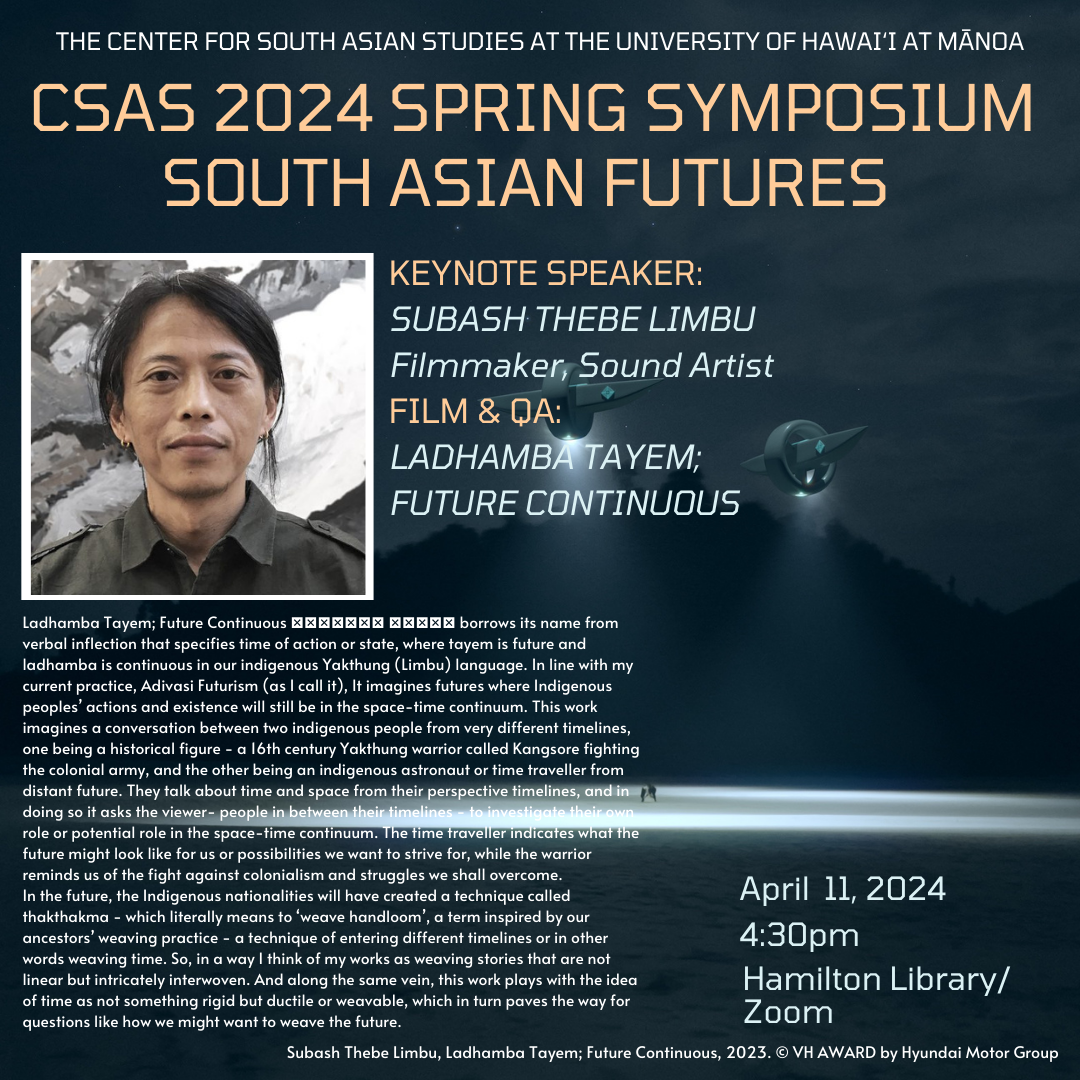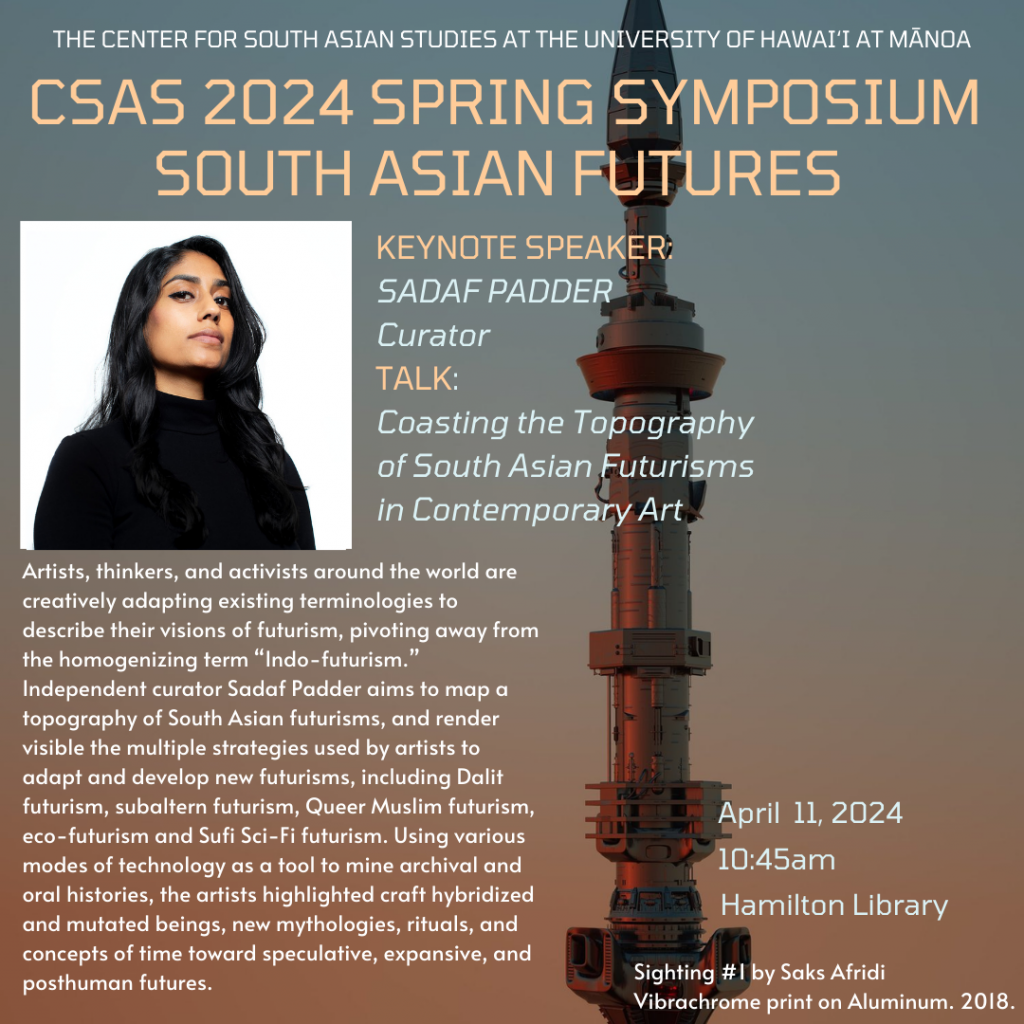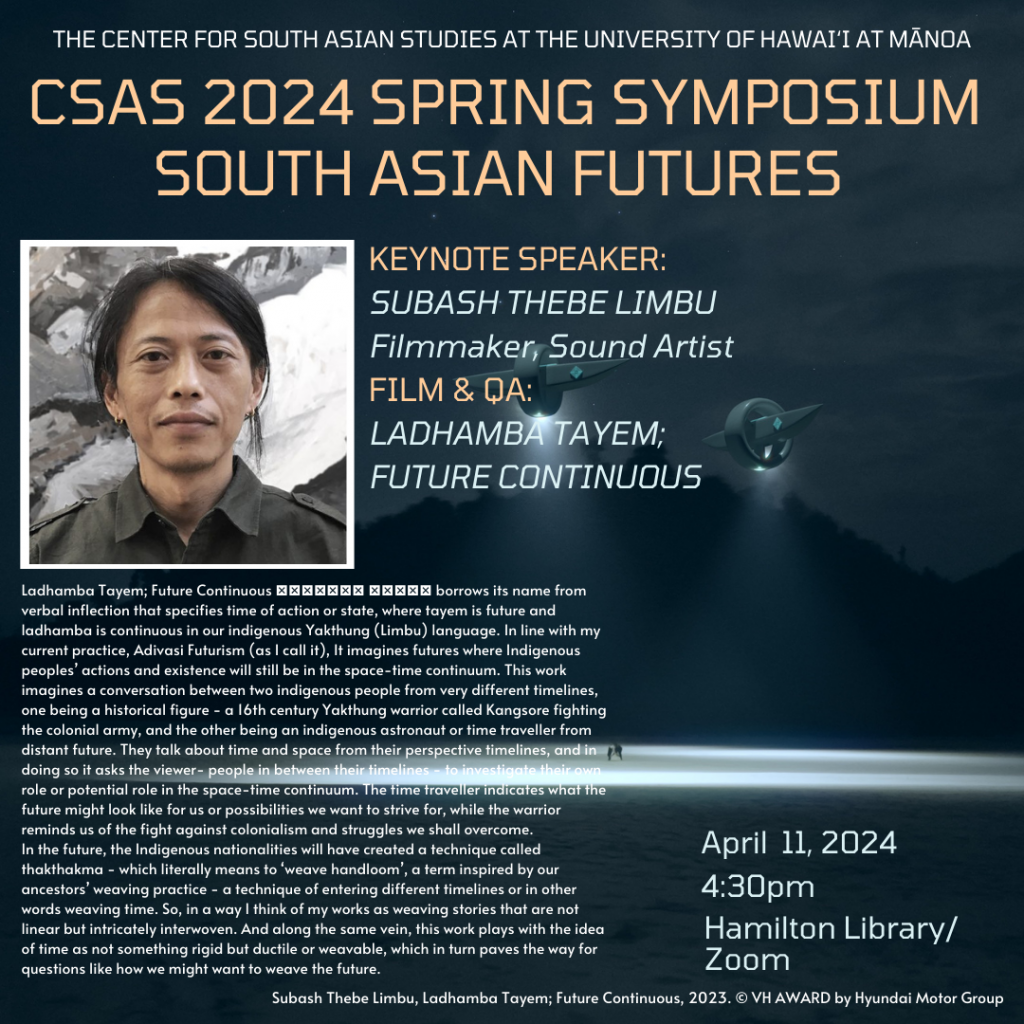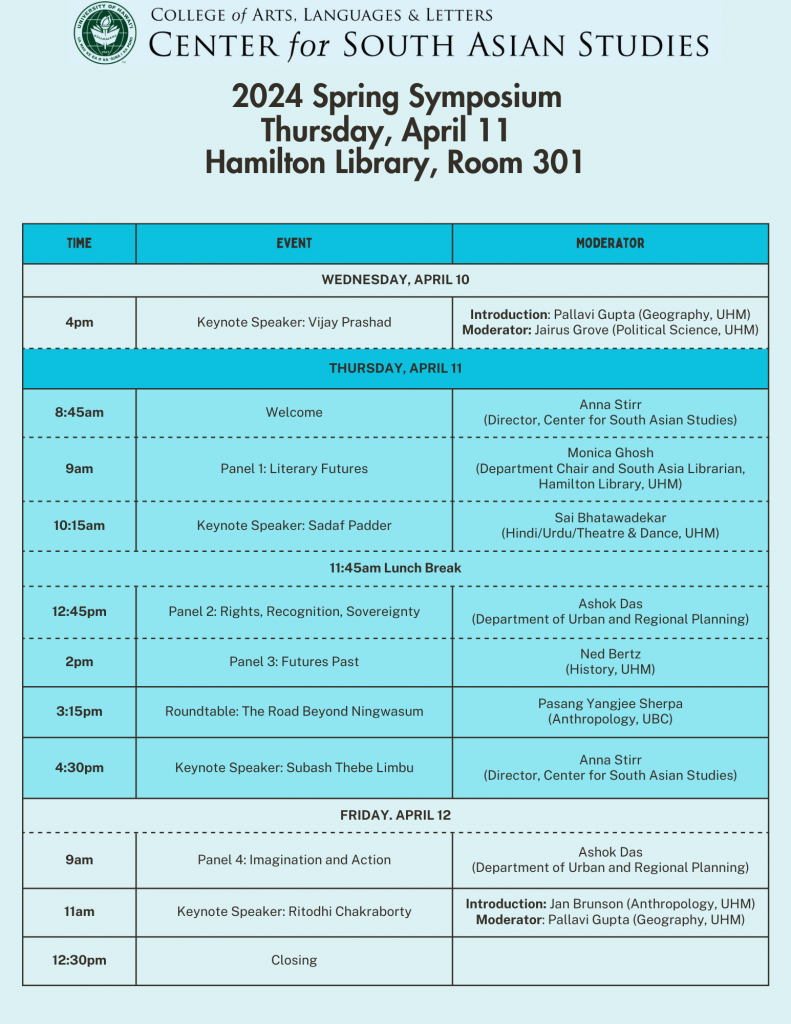
CSAS Spring Symposium
Thursday, April 11 Schedule
Hamilton Library, Room 301


Keynote Speaker:
Sadaf Padder
Moderator: Dr. Sai Bhatawadekar
(Indo-Pacific Languages and Literature)
Thursday, April 11 at 10:45am
Hamilton Library, Room 301
Keynote Speaker:
Subash Thebe Limbu
Moderator: Dr. Anna Stirr
(Asian Studies)
Thursday, April 11 at 4:30pm
Hamilton Library, Room 301
Sadaf Padder, Curator
Bio: Sadaf Padder is a Brooklyn-based independent curator, writer and community organizer focused on excavating under-recognized contemporary art movements and histories related to the Global South. She has curated across the country, from Philadelphia to Los Angeles to Martha’s Vineyard, focusing on themes of social justice, futurism, radical liberation movements, caste abolition, climate change and neo-mythology to weave connections between various communities. Padder is uniquely informed by her background as a public school educator and administrator of eight years. She maintains a dedicated community-based practice where she develops youth arts programs and internships. Her curations have earned mentions in LA Weekly, Hyperallergic and Art News and resulted in acquisitions of BIPOC women artists by the Baltimore Museum of Art, Northwestern University and the Nion McEvoy Foundation. Padder has contributed writing to Visual Aids, ARTSY, Up Mag and Hyperallergic. She also serves as a board member for the Chickweed Alliance and ArtBridge; is lead fundraiser for Grown in Haiti, where she is building a community center and artist retreat in Jacmel, Haiti; and is a member of Phoenix Community Garden, where she runs community events and youth programs. She is a Create Change alumna with the Laundromat Project as well as a 2022–23 Emily J. Hall Tremaine Fellow via Hyperallergic.
Abstract: Artists, thinkers, and activists around the world are creatively adapting existing terminologies to describe their visions of futurism, pivoting away from the homogenizing term “Indo-futurism.” Independent curator Sadaf Padder aims to map a topography of South Asian futurisms, and render visible the multiple strategies used by artists to adapt and develop new futurisms, including Dalit futurism, subaltern futurism, Queer Muslim futurism, eco-futurism and Sufi Sci-Fi futurism. She presents convergences and divergences with the mother of futurisms – Afro-Futurism – by highlighting artists using various modes of technology as a tool to mine archival and oral histories, the artists highlighted craft hybridized and mutated beings, new mythologies, rituals, and concepts of time toward speculative, expansive, and posthuman futures.
Subash Thebe Limbu, Filmmaker, Sound Artist
Bio: Subash Thebe Limbu is a Yakthung (Limbu) artist from Yakthung Nation (Limbuwan) from what we currently know as eastern nepal. He works with sound, film, music, performance, painting and podcast. His Yakthung name is ᤋᤠᤱᤛᤠᤱ Tangsang (Sky). Subash has MA in Fine Art from Central Saint Martins (2016), BA in Fine Art from Middlesex University (2011), and Intermediate in Fine Art from Lalit Kala Campus, Kathmandu. His works are inspired by socio-political issues, resistance and science/speculative fiction. Notion of time, climate change, and indigeneity or Adivasi Futurism as he calls it, are recurring themes in his works. Subash is the co-founding member of Yakthung Cho Sangjumbho (Yakthung Art Society) and Haatemalo Collective. Quantumly based in Newa Nation (Kathmandu) and London.
Abstract: Ladhamba Tayem; Future Continuous ᤗᤠᤎᤠᤶᤒᤠ ᤋᤠᤕᤧᤶ borrows its name from verbal inflection that specifies time of action or state, where tayem is future and ladhamba is continuous in our indigenous Yakthung (Limbu) language. In line with my current practice, Adivasi Futurism (as I call it), It imagines futures where Indigenous peoples’ actions and existence will still be in the space-time continuum. This work imagines a conversation between two indigenous people from very different timelines, one being a historical figure – a 16th century Yakthung warrior called Kangsore fighting the colonial army, and the other being an indigenous astronaut or time traveller from distant future. They talk about time and space from their perspective timelines, and in doing so it asks the viewer- people in between their timelines – to investigate their own role or potential role in the space-time continuum. The time traveller indicates what the future might look like for us or possibilities we want to strive for, while the warrior reminds us of the fight against colonialism and struggles we shall overcome.
In the future, the Indigenous nationalities will have created a technique called thakthakma – which literally means to ‘weave handloom’, a term inspired by our ancestors’ weaving practice – a technique of entering different timelines or in other words weaving time. So, in a way I think of my works as weaving stories that are not linear but intricately interwoven. And along the same vein, this work plays with the idea of time as not something rigid but ductile or weavable, which in turn paves the way for questions like how we might want to weave the future.

For more information about keynotes, panels, and schedule visit: https://southasiasymposium2024.wordpress.com/
